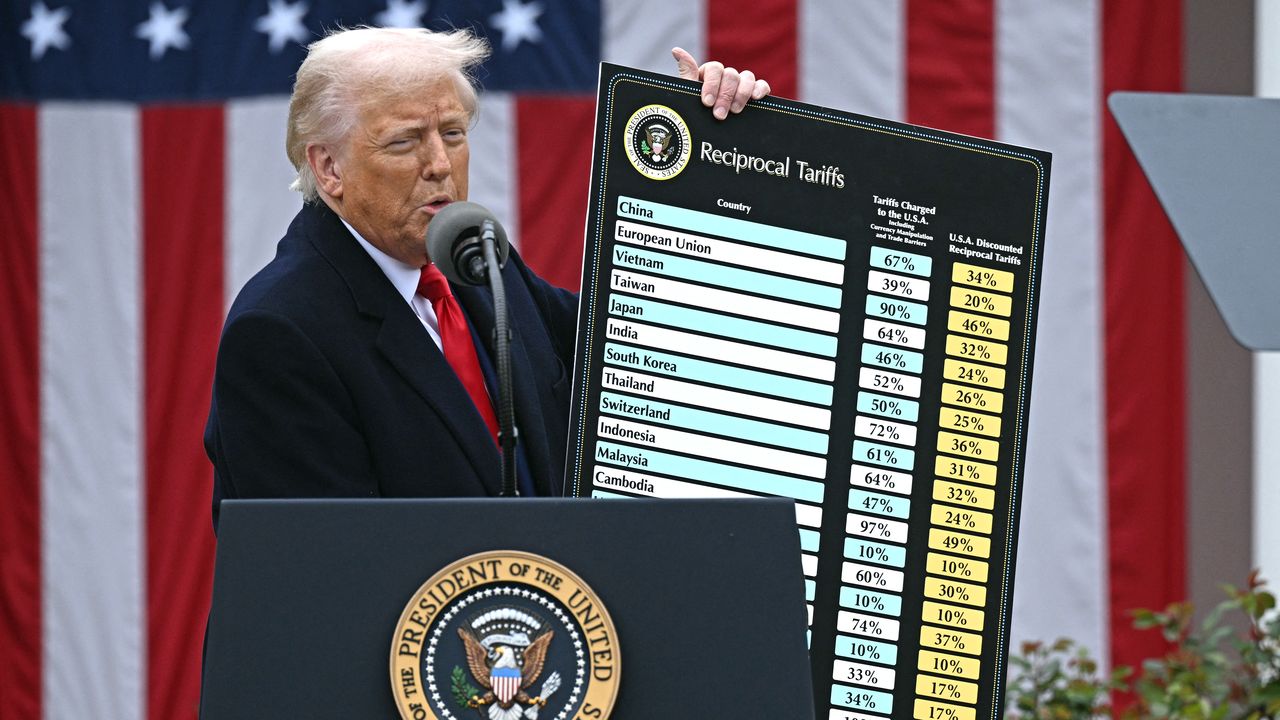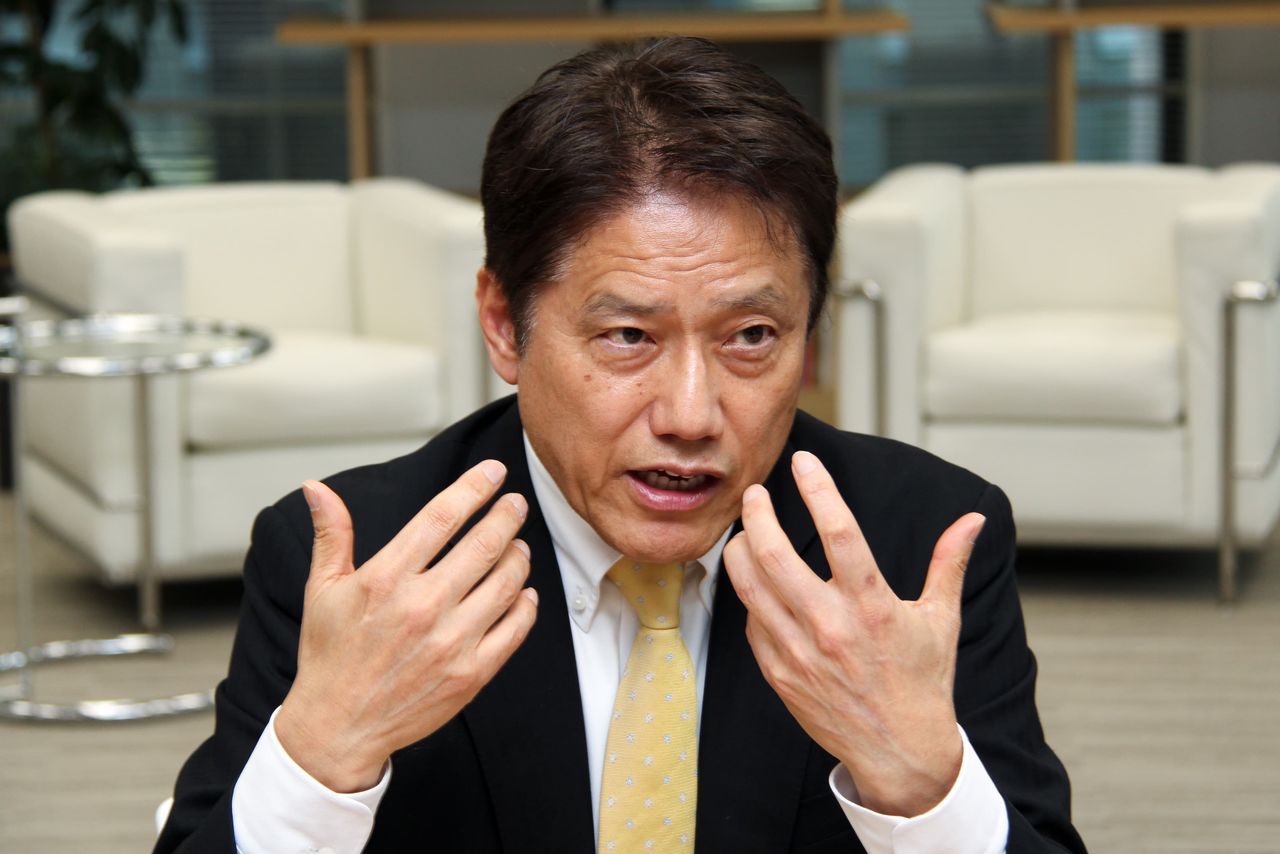
Making Common Cause with Free Trade Allies: The Best Tariff Defense
Economy World Politics- English
- 日本語
- 简体字
- 繁體字
- Français
- Español
- العربية
- Русский
A Big Experiment
What is the essential aim of US President Donald Trump’s reciprocal tariffs? Without establishing this, Japan cannot come up with appropriate countermeasures. Unable to ignore plunging stock prices, Trump announced a 90-day pause on the tariffs, but the fundamental thinking behind them remains the same.
Trump is not the only one to believe that the postwar free trade system destroyed US prosperity. Many economists in their forties think the same, including Stephen Miran, the chair of the Council of Economic Advisers to the US president, and think tank head Oren Cass, who recently visited Japan. This is a generation that did not know the US golden age. They have a powerful victim complex rooted in the belief that other countries took advantage of the United States as it ensured global security through its nuclear umbrella. As they see national security and economics as the same thing, they think it obvious that those who want security should be made to pay a fitting amount to get it. This is a view of the world that needs to be handled with care.
Clearly, it is easy to make the counterargument that the free trade system worked to the advantage of the United States. Anybody who has studied respectable economics can talk in detail on how US hegemony was sustained by the postwar economic order. Having the dollar positioned as the key international currency allowed the United States to keep its presses busy printing money.
The supporters of Trump’s tariffs argue that they are necessary to revive US manufacturing. But an understanding of the country’s economic situation shows that they will damage its production base and throw into confusion its supply chains for parts and other items. Forced deportation of immigrants will also drive up labor costs. There is no hope of reviving manufacturing under these circumstances.
If inequalities are becoming more extreme and there are white working-class job losses in the Midwest, the US government should respond with redistributive policies. However, this kind of sound reasoning will not make an impression on members of the Trump administration, because they are engaged in what they construe as a big experiment. They will continue until they realize that it has failed. Perhaps it is necessary to see the current confusion as the cost of making them notice the failure.

Meisei University Professor Hosokawa Masahiko expounds on the Trump tariffs and what Japan can do. (© Nippon.com)
Turning to China
One unfortunate development might be that countries in the Global South, which are suffering the greatest damage from the tariffs, feel that they can no longer rely on the United States and turn to China instead. With US withdrawal, China is ready to fill the gap, and will do so for all in the South if others stand back. This is a worst-case scenario. Japan should try to strengthen its ties with these countries.
The world has entered an era in which the two great powers of the United States and China are putting themselves first. It is a crisis for trade blocs. While China claims to follow free trade, its actions are another matter completely. Under its policies, key industries are kept entirely within its borders.
This means that Japan’s path to survival is to find a way of coordinating with countries like Australia and South Korea, as well as the European Union. I call this an “autonomous alliance.” How to form this group while bringing in members of the Global South is an important question.
Actually, I had the same experience when I was working at the former Ministry of International Trade and Industry in the 1980s. There was a real sense of crisis and fear over moves toward the formation of the European Union and the establishment of the North American Free Trade Agreement. At that time, I worked out a plan to begin the Asia-Pacific Economic Cooperation forum with Australia and other countries in the region.
The Value of Trust
The EU is set to become extremely important, and frankly it should become part of the Trans-Pacific Partnership. There is no chance of the Trump administration returning to the TPP now, so the only option is to use this grouping as a way to trade as widely as possible, excluding the US market. Japan should carefully consider this as a strategic countermeasure.
Even if a country with a small market like Japan adopts retaliatory tariffs, it will suffer the greater damage. For this reason, it is important for countries to respond collectively to the United States, rather than individually. And instead of making noisy declarations, it is better to work on this behind closed doors.
Fortunately, Japan gained a valuable asset in the process of establishing the TPP, which is trust. Japan is seen as being honest. Negotiations make no progress when each country concentrates only on its own interests, but Japan sweated in its coordinating role, winning the trust of ASEAN—which could not be said for China. It is important to understand what one’s country has to offer, and Japan must make the most of its strengths.
In this sense, I am not satisfied with the approach of Prime Minister Ishiba Shigeru’s administration. Since his summit with Trump on February 7, there has been no follow-up. Japan faces the impact of a 25% tariff on automobiles, which is more severe than the reciprocal tariffs. After the auto tariff was announced in March, Minister of Economy, Trade, and Industry Mutō Yōji visited the United States and spoke with Secretary of Commerce Howard Lutnick, but Lutnick has no power to change anything. Only Trump can decide. Also, Mutō left discussions to his staff after saying that negotiations had broken down, but this puts them in a difficult position.
Life and Death for Automobile Industry
On April 7, after Ishiba spoke with Trump for 25 minutes by telephone, Trump posted the same complaints as before about Japanese cars and rice on social media. In other words, Ishiba failed to persuade him. One can only think that Ishiba wanted to give people in Japan the impression that he was doing something.
The Ministry of Land, Infrastructure, Transport, and Tourism has responsibility for nontariff barriers for automobiles, while the Ministry of Agriculture, Forestry, and Fisheries handles agricultural products. Usually, the prime minister would get these ministries involved by ordering a framework for negotiations, and they would follow his instructions. Ahead of the House of Councillors elections this summer, it might be difficult for the Liberal Democratic Party to make concessions on agricultural products. However, amid soaring rice prices and the release of stores from the nation’s grain stockpiles, surely there would be public support for expanding “minimum access” policies and increasing purchases of cheap US rice.
Rather than making a show of getting the whole cabinet together for meetings on countermeasures, Ishiba should take the lead in putting the focus on areas of interest to Trump.
This is a question of life and death for the automobile industry, which employs 5.5 million workers in Japan, including related sectors. While it is also important to establish points for companies in each prefecture to consult about tariffs, the government must move fast to develop its negotiating strategies.
(Originally published in Japanese on April 11, 2025, based on an interview by Koga Kō of Nippon.com. Banner photo: US President Donald Trump announces a series of tariffs at the White House on April 2, 2025. © AFP/Jiji.)
